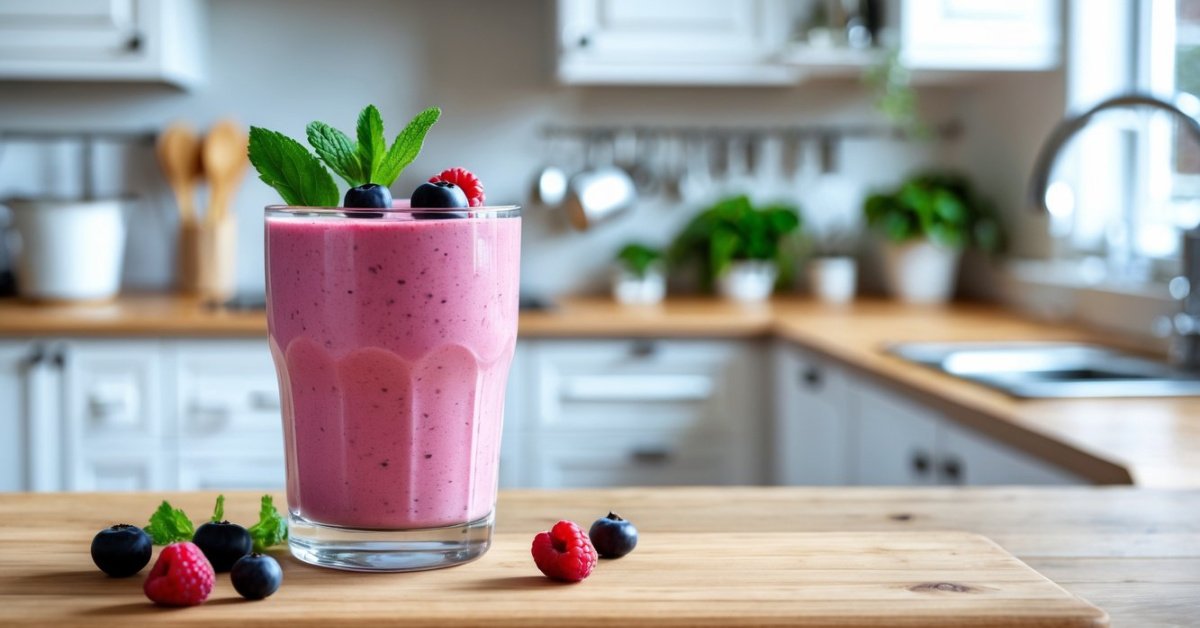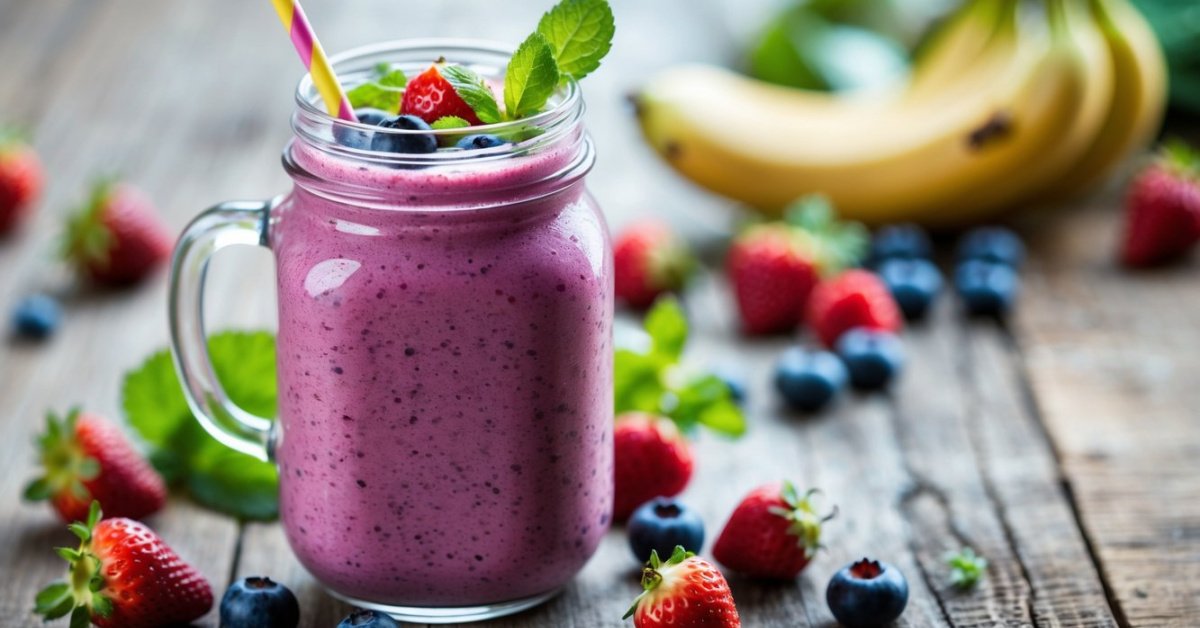I love starting my day with a fresh smoothie, especially when I know it’s doing more than just satisfying my taste buds. It’s amazing how a simple blend of fruits and veggies can pack such a powerful punch for my overall well-being. Lately, I’ve been paying extra attention to how what I eat affects my eyes.
With all the time I spend in front of screens, taking care of my vision feels more important than ever. That’s why I’ve been exploring smoothies that support eye health. It’s easy, delicious, and gives me peace of mind knowing I’m helping my eyes stay sharp and bright.
The Link Between Nutrition and Eye Health
I always prioritize ingredient selection for smoothies at my shop, since specific nutrients connect directly with better eye health. Eyes rely on antioxidants like lutein, zeaxanthin, and vitamin C, found in ingredients such as kale, spinach, and oranges. I add these to recipes often—carrots provide beta-carotene, while sunflower seeds and avocados supply vitamin E, which research published by the American Optometric Association links to reduced risk of age-related macular degeneration.
Customers often ask about nutrients that help with screen fatigue. I recommend blueberries and walnuts, as they contain zinc and omega-3s, noted by the National Eye Institute to support retina structure and visual processing. I’ve found leafy greens, citrus fruits, nuts, and seeds to be essential for mixing shakes that help daily vision wellness.
I combine these nutrient-rich foods for recipes that not only taste fresh and vibrant but also target specific eye health concerns my customers bring up. This approach lets me create smoothies that serve both flavor and function, connecting great taste with nutritional benefits.
Key Nutrients for Healthy Eyes
Eye health depends on adding specific nutrients to each smoothie I make. I always choose ingredients that deliver vitamins, antioxidants, minerals, and healthy fats for better vision and protection.
Vitamins and Antioxidants
Vitamins and antioxidants form the foundation of my eye-supporting smoothie recipes. I use kale and spinach to add lutein and zeaxanthin, two carotenoids that the retina absorbs for natural blue light filtering, as shown in studies from the American Optometric Association. I mix in oranges and strawberries for their high vitamin C content, supporting blood vessels in the eyes. Carrots and pumpkin add beta-carotene, which the body turns into vitamin A, an essential compound for light detection in the retina. For vitamin E, I add sunflower seeds or avocados to shield eye cells from free radical damage, following guidelines from the National Eye Institute.
Minerals and Healthy Fats
Minerals and healthy fats play a key role in every smoothie I assemble for eye wellness. I toss in walnuts and flaxseeds to provide omega-3 fatty acids, helping maintain cell structure in the retina. Blueberries and pumpkin seeds are my go-to for zinc, which supports vitamin A usage and fights night blindness, as confirmed by the American Academy of Ophthalmology. Almonds contribute healthy monounsaturated fats and extra vitamin E for added antioxidant power. By combining these elements, I create consistent blends that focus on both flavor and lasting eye support.
Top Ingredients for Eye-Boosting Smoothies
When I craft smoothies for eye health at my shop, I select each ingredient for maximum nutritional impact. Using fresh, top-quality produce and seeds gives every smoothie a powerful eye-protective punch.
Leafy Greens
Leafy greens like kale and spinach make every batch rich in lutein and zeaxanthin. I always use these greens because they protect the retina and help filter blue light from screens. Even a handful of fresh spinach blends smoothly and doesn’t overpower the flavor of berries or citrus, making it an easy base for most mixes.
Brightly Colored Fruits and Vegetables
Brightly colored fruits and vegetables add both vivid flavor and concentrated eye-supporting nutrients. I choose carrots and pumpkins for beta-carotene, oranges and strawberries for vitamin C, and sweet potatoes for added antioxidants. These ingredients amplify both the taste and health benefits, especially for people facing frequent digital eye strain.
Seeds and Nuts
Seeds and nuts, such as sunflower seeds, almonds, walnuts, and flaxseeds, supply vitamin E and omega-3 fatty acids vital for long-term vision support. I often blend walnuts and flaxseeds for their mild flavor and creamy texture, while sunflower seeds and almonds boost nutrient content and help thicken the smoothie. Each scoop delivers an extra layer of eye defense in every serving.
Simple Smoothie Recipes for Better Eye Health
Smoothies balance bold flavors and essential nutrients that directly support eye health. I rely on recipes that combine ingredients proven by research to promote healthy vision for my shop and when making smoothies at home.
Green Vision Smoothie
I blend leafy greens with citrus for the Green Vision Smoothie, focusing on lutein and vitamin C. Spinach, kale, and avocado form the base, giving each serving around 6 mg of lutein and zeaxanthin combined (NIH, 2021). I toss in half an orange and a few cubes of mango for over 50 mg of vitamin C and beta-carotene. Adding a tablespoon of sunflower seeds introduces vitamin E and healthy fats, improving the absorption of fat-soluble antioxidants. I pour in unsweetened almond milk for a creamy texture and a dose of vitamin E, keeping the drink both light and nourishing for daily eye support.
Berry Antioxidant Smoothie
I craft the Berry Antioxidant Smoothie to maximize eye-protective antioxidants and minerals. Blueberries, blackberries, and strawberries pack in over 200 mg of anthocyanins and roughly 3 mg of zinc per serving (USDA FoodData Central, 2023; NIH, 2021). I blend them with a small carrot for beta-carotene and half a banana for potassium and sweetness. A tablespoon of flaxseeds boosts the omega-3 content, helping with retinal function. Greek yogurt or a dairy-free alternative provides protein, while also supporting the absorption of fat-soluble nutrients. This smoothie targets screen-related fatigue and overall retinal health, and I recommend it for a flavorful, vision-focused pick-me-up.
Tips for Making Eye-Healthy Smoothies
- Select vibrant produce
I pick fresh kale, spinach, and carrots for their lutein and beta-carotene content. I check for bright colors because these indicate higher antioxidant levels, especially for supporting vision.
- Use nutrient-dense add-ins
I add sunflower seeds, walnuts, and flaxseeds to raise vitamin E, zinc, and omega-3s in every blend. I mix avocados in for creaminess and extra healthy fats, which help the body absorb nutrients like beta-carotene.
- Balance fruits and veggies
I combine sweeter fruits like oranges, strawberries, and blueberries, which provide vitamin C and eye-protecting polyphenols. I balance each batch with leafy greens and orange veggies to boost both taste and eye health without overwhelming the palate.
- Avoid excess sugar
I use naturally sweet fruits rather than syrups, agave, or added sugars to keep blood sugar stable and maintain nutrient integrity for eye tissues.
- Blend for perfect texture
I blend thoroughly at a high speed, using a powerful blender, to ensure seeds and leafy greens become smooth, making nutrients more accessible and creating a satisfying mouthfeel.
- Include a liquid base with extra benefits
I pour in orange juice for extra vitamin C or choose fortified plant-based milks for additional vitamin A and D, depending on the selected produce and the boost I want for each smoothie.
- Rotate ingredients for variety
I switch between different berries, leafy greens, and seeds each week, which prevents flavor fatigue and supports a broader spectrum of eye-health nutrients.
- Prep for convenience
I pre-portion ingredients into freezer bags for busy mornings, ensuring each bag includes a mix of eye-protective foods outlined above. This way, a nutrient-rich smoothie comes together in 2-3 minutes, making regular eye care much easier.
Conclusion
Taking care of my eyes has become just as important as caring for the rest of my body and smoothies have become a delicious way to do it. I love knowing that with every sip I’m fueling my vision with ingredients that really make a difference.
It’s amazing how a few simple tweaks in my daily routine can help protect my eyes from screen fatigue and long-term issues. If you’re looking for an easy and tasty way to support your eye health give these smoothie ideas a try—you might be surprised by how good you feel!





